Maniharon ka Raasta
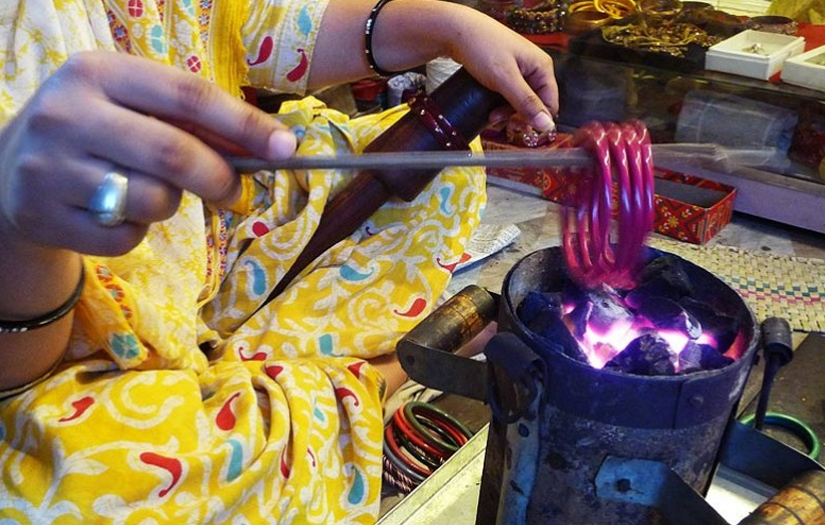
Who will buy these delicate, bright
Rainbow-tinted circles of light?
Lustrous tokens of radiant lives,
For happy daughters and happy wives.
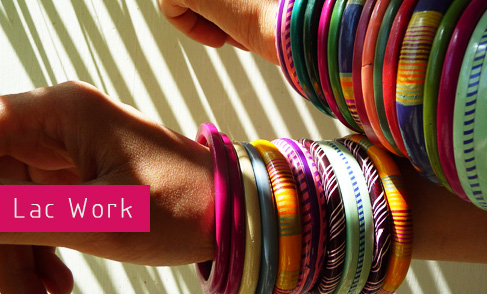
These lyrics penned by the nightingale of India, Sarojini Naidu echo the sentiments that secretly unite womankind all over. What appears to the uninformed as an accessory that changes with changing trends, is actually a witness to a girl’s journey till she embraces womanhood. As a toddler her little wrists were adorned with gold and silver bangles, which over her growing years turned into charms and junk….and suddenly became auspicious companions when she stepped across the threshold into blissful matrimony as a young bride. The word bangle is derived from Hindi word ‘bungri’ meaning glass. Seashell, copper, bronze, gold, agate, chalcedony have been used to make bangles through centuries. But the art of making lac bangles at the ‘Maniharon ka Raasta’ in Jaipur is a peculiar flair, where through the length of the lane one can let his or her senses indulge in a visual canvas of colors and the music of jingling bangles, which punctuates the endless chatter of women who flood the many shops.
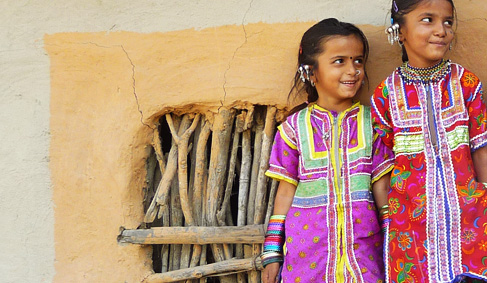
Lac bangle making is an art, as old as the establishment of Jaipur city. The king of Amer summoned the most initial craftsmen from the Manoharpur district of Uttar Pradesh. Once the capital city was instituted, these Manihar craftsmen also shifted their vocational base from Amer to Jaipur. The lane is dotted with countless bangle selling shops mostly managed by the muslim Manihari women while their men are away at the kilns and furnaces melting and preparing the raw-material.
 The antiquity of this natural resin goes as back as the vedas, where the Laksha taru (or Palas) in Sanskrit, or the Lac tree has been mentioned. In the Atharva Veda, there is a small chapter devoted to the description of Lac insect, its habits and usefulness. The story of the notorious Lac palace built by the Kauravas in a plot to eliminate the Pandavas, in an episode from the 3000-year-old Mahabharata epic sheds more light on the history of this material.
The antiquity of this natural resin goes as back as the vedas, where the Laksha taru (or Palas) in Sanskrit, or the Lac tree has been mentioned. In the Atharva Veda, there is a small chapter devoted to the description of Lac insect, its habits and usefulness. The story of the notorious Lac palace built by the Kauravas in a plot to eliminate the Pandavas, in an episode from the 3000-year-old Mahabharata epic sheds more light on the history of this material.
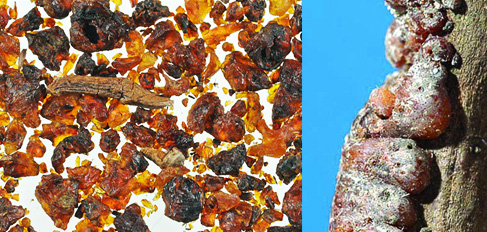
Crimson red, plant sucking, tiny insects such as Laccifer lacca, Carteria lacca and Tachardia lacca colonize the branches of selected species of host trees and secrete a natural scarlet resin known as Lac. Later the different layers of resin residue on the coated branches of the host trees are scraped off as long sticks known as sticklac, crushed, sieved and washed several times to remove impurities till it shows up in natural red color. This Lac, acquired from Balrampur in Uttar Pradesh is further heated to settle down the impurities and get the best of it floating on the surface. To this molten Lac, which is originally brick red in color, the bangle makers further add wax (beroza) to increase the cohesiveness, titanium (Ghea pathar) to increase the volume and coloring agents. Generally the quantity of talc varies from 5% to 95% and is highly instrumental in determining the quality of the Lac bangles.
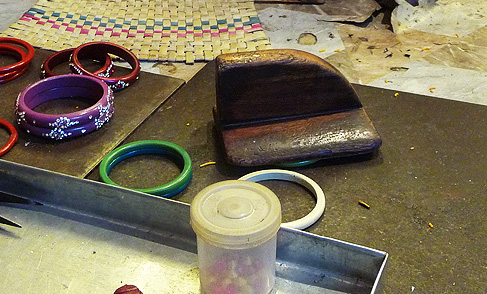
The process of obtaining Lac is carried out in large mud kilns. Semisolid Lac is placed on the hot metal plate coated with a layer of oil, which prevents it from sticking to the plate. This semisolid dough is then rolled into poles, and once dry these poles are sent away to the women who run the shops within the city. The ladies generally manage with a singular stove with a metal plate on top and simple hand made wooden batons and tweezers from within the shop. Roller pins are used to flatten the length of the solid poles and draw sheets out of the chunk. Slender strips are then creased and cropped out of the flat sheet of lacquer and rolled into a bangle like shape.
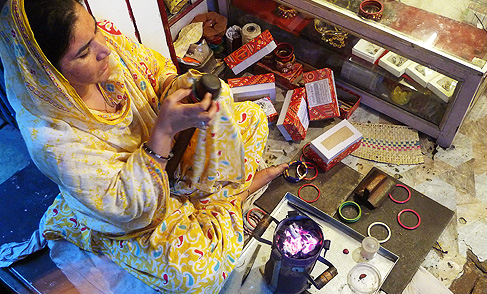
The dimensions of these bangles are adjusted by mild heating on the stove and gentle molding over wooden batons of varying diameters. The beauty of these bangles emerges from the fact that the manihari women create custom made accessories for their clientele by adjusting the bangle to the desired size and ornamenting them with the preferred beads, stones, crystals and other embellishments fancied by the she patrons visiting the store. It is interesting to observe the Lac bangles once broken, can easily be rejoined by mild heating and tender fabrication over the wooden mould. Since repeated heating eliminates moisture and makes lacquer brittle, the process of breaking and rejoining has a limit of 8 to 10 times only.
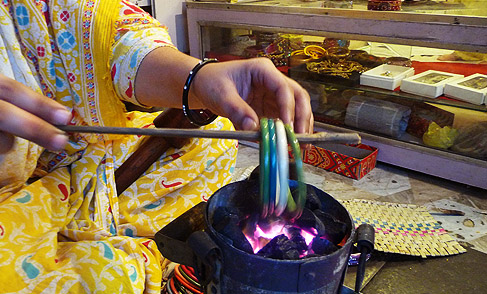
The Rajasthani rituals are known to require specific traditional ornamentations and different festivals seek different ensembles. Hence the sale of these bangles surges during local celebrations such as teej, the marwari festival of gangaur, karva chauth, holi, weddings and special ceremonies for the mothers-to-be. In fact, each celebration can be identified with a distinct style of bangle design. For instance, a wedding in the family calls for the “gulali choodha” or the red colored bangle or the “hare bandon ka choodha”, the green colored bangle. Pink colored bangles are worn exclusively during holi. Besides bangles, rings, toe rings (bichchua), anklets (payal), nose rings, neck pieces, Bala, Bajuband, Rakhi, Gajra, Gokhru, Timaniyan and ‘maathe ka tika’ make prized slections for the visiting female clientele.
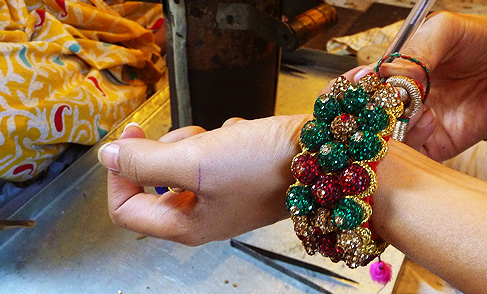
Deforestation has immensely affected the Lac reserves of our country resulting in escalation of the raw material cost. But little do people realize this fact and continue to expect their lacquer ware at ancient prices. A mute witness to this change are the statistics which reveal that the number of furnaces for Lac processing have reduced to 200-250, from a staggering 1500 that existed twenty-five years ago. The odd circumstances have been an important reason for the craftsmen to shift to alternate vocations.
Read in detail ~ Gaatha.org
Watch Video ~ Hands of Handmade


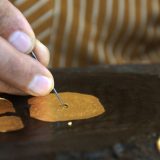








Siddhi
Very very well written.. absolute delight to read. My 4yo daughter wanted to know all about the lack bangels. Thanks for the article. I wish the craftsman get what they deserve and this craft stays alive for ever. It’s just sad to know that people don’t value local and traditional art anymore. Thanks again.